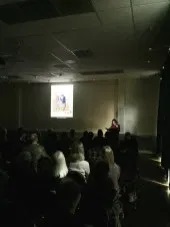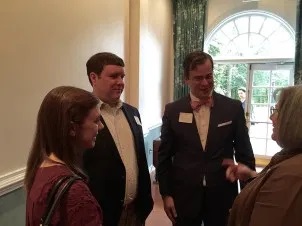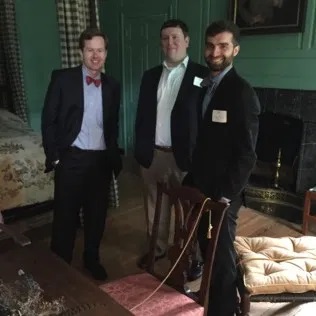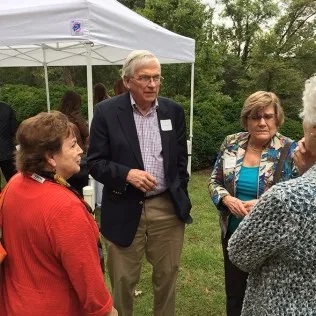Primary Sources: New Research on Virginia Houses and Material Culture

To complement the Emerging Scholars Program and to reach a wider audience, the Decorative Arts Trust is experimenting with new program formats. On October 10th, the Trust debut a new one-day special topic symposia. Held in collaboration with the Wilton House Museum in Richmond, Primary Sources: New Research on Virginia Houses and Material Culture brought seven scholars from five institutions to share their latest research into some of the most revered historic sites in the nation.
For decorative arts enthusiasts, the objects that survive in private collections and museums both large and small throughout the Old Dominion are some of the oldest and most iconic examples of their kind in America. Introducing new ideas about then can shed better light on our cultural history. We are also deeply grateful for the collaboration and assistance of the staff of the Wilton House Museum, who enthusiastically embraced the idea. Their institution is a wonderful example of an established historic house bringing its story to new audiences and making the narrative relevant to our time. The site proved an ideal venue, and the staff expertly organized the logistics of the day, including the delicious lunch and reception on the lawns of the house.
The one-day format was an experiment for the Trust in two ways: we sought to highlight new research and scholarship by younger scholars and curators who are starting to fill positions in some of the oldest museum institutions in Virginia, many of which are revered national icons worthy of a special pilgrimage; and we also hoped to bring the Decorative Arts Trust’s signature programming to a wider audience who had either not heard of the organization or had previously been unable to commit the time and resources for one of our longer symposia or study tours. We could not have been more pleased with the results.
We invited curators from Wilton House, Montpelier, Colonial Williamsburg, Mount Vernon, and Monticello (in addition to a young collector based in Richmond), and they delivered superb presentations focusing on interesting topics and recent or ongoing research. Some of the lectures covered new investigations of well-known objects and interiors: whether it’s uncovering the full story of several chairs in the collection of Montpelier associated with the early Presidents; or discovering the furniture George Washington had in his front parlor, thanks to a chance discovery of the maker’s name in an account book acquired by Mount Vernon in 2014. Others, looked at longstanding collections and objects in new lights, such as how to interpret the broken or repaired pottery that are common finds at archaeological sites, or the range of portraiture produced by itinerant artists seeking patronage in Virginia.
Sometimes new research on old institutions requires confronting topics that have been long avoided or glossed over as sources of discomfort. Susan Stein, the Senior Curator and Vice President of Programming at Monticello, gave the headline lecture on Monticello’s acclaimed efforts to interpret slavery. When Ms. Stein and her colleagues unveiled the “Slavery at Monticello” smartphone app earlier this year, it made headlines around the country. Although limited physical evidence of the lives and occupation of enslaved persons survives today at the site, these people were integral to the shaping of Jefferson, his life, and his work, and thoroughly documented in archival records. They possessed lives and stories of their own, including surnames and relationships that were often completely unknown to Jefferson. However, the oral histories of their descendents can be cross-referenced to Jefferson’s own records, and scholars now know much more about the lives and occupations of many individuals in this community. The accurate interpretation of their role in the daily life and workings of Monticello is becoming increasingly vital to both its institutional mission and a fuller understanding of our national history.
Another highlight of the day was the opportunity to tour Wilton after lunch. The staff was on-hand to answer questions, share their latest findings, and talk about upcoming ideas for interpretation and education that may result from a forthcoming historic structures report. Highlights from Michael Phillips’s collection of Virginia and Maryland furniture were specially installed in the upper hall, and Michael himself was on-hand to talk about them. The quiet rooms of the house once again became lively, filled with people appreciating their history, and the objects used to interpret them.
About The Decorative Arts Trust Bulletin
Formerly known as the "blog,” the Bulletin features new research and scholarship, travelogues, book reviews, and museum and gallery exhibitions. The Bulletin complements The Magazine of the Decorative Arts Trust, our biannual members publication.


















